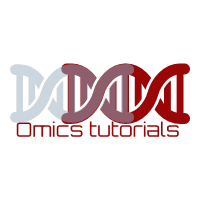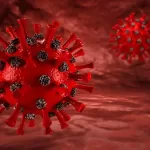
Bioinformatics glossary – P
November 13, 2018A | B | C | D | E | F | G | H | I | J | K | L | M | N | O | P | Q | R | S | T | U | V | W | X | Y | Z
Bioinformatics glossary – P

Palindrome
A region of DNA with a symmetrical arrangement of bases occuring about a single point such that the base sequences on either side of that point are identical (if the strands are both read in the same direction) e.g 5′ GAATTC 3′ whose complementary sequence is 3′ CTTAAG 5′.
Pattern
Molecular biological patterns usually occur at the level of the characters making up the gene or protein sequence. A pattern language must be defined in order to apply different criteria to different positions of a sequence. In order to have position-specific comparison done by a computer, a pattern-matching algorithm must allow alternative residues at a given position, repetitions of a residue, exclusion of alternative residues, weighting, and ideally, combinatorial representation.
Bioinformatics strives to define representations of key biological datatypes, algorithms and inference procedures, including sequences, structures, biological pathways and reactions. Representing and computing with biological pathways requires ontologies for representing pathway knowledge; User interfaces to these databases; Physico-chemical properties of enzymes and their substrates in pathways; And pathway analysis of whole genomes including identifying common patterns across species and species differences.
Paralog
Paralogs are genes related by duplication within a genome. Orthologs retain the same function in the course of evolution, whereas paralogs evolve new functions, even if these are related to the original one.
Paralogs are genes related by duplication within a genome. Orthologs retain the same function in the course of evolution, whereas paralogs evolve new functions, even if these are related to the original one.
Parameters
Parameters are user-selectable values, typically experimentally determined, that govern the boundaries of an algorithm or program. For instance, selection of the appropriate input parameters governs the success of a search algorithm. Some of the most common search parameters in bioinformatics tools include the stringency of an alignment search tool, and the weights (penalties) provided for mismatches and gaps.
Peptide
A short stretch of amino acids each covalently coupled by a peptide (amide) bond.
Peptide bond (amide bond)
A covalent bond formed between two amino acids when the amino group of one is linked to the carboxy group of another (resulting in the elimination of one water molecule).
Phage (Bacteriophage)
A virus that infects bacterial cells and serves as a useful vector for introducing genes into bacteria for a number of purposes.
Phage display
A technique in which phage are engineered to fuse a foreign peptide or protein with their capsid (surface) proteins and hence display it on their cell surfaces. The immobilized phage may then be used as a screen to see what ligands bind to the expressed fusion protein exhibited (displayed) on the phage surface.
The use of (DNA-based) genotyping in order to target pharmaceutical agents to specific patient populations. Genetic differences are known to affect responses to many types of drug therapy, and pharmacogenomics analysis serves to customize the use of pharmaceuticals for specific subgroups of patients.The rationale for this approach is that observed gene expression differences may correlate with, and explain, the differences in side effects and efficacy to drugs in humans.
Pharmacophore
The three dimensional spatial arrangment of atoms, substituents, functional groups, or chemical features that together are sufficient to describe the pharmacologically active components of a drug molecule or molecule series.
Phenotype
Any observable feature of an organism that is the result of one or more genes.
Phylum
The segmentation of the animal kingdom into about 30 major groups collectively known as phyla. The members of each phylum share the same basic structure and organization. For instance, fish, birds, and human beings belong to one phylum – the Chordata – because all have spinal cords.
Physical map
A physical map consists of a linearly ordered set of DNA fragments encompassing the genome or region of interest. Physical maps are of two types, macro-restriction maps and ordered clone maps. The former consists of an ordered set of large DNA fragments generated by using restriction enzymes whose recognition sequences are infrequently represented in the genome. An ordered clone map consists of an overlapping collection of cloned DNA fragments. The DNA may be cloned into any one of the available vector systems–YACs, cosmids, phage, or even plasmids. Major advantages of ordered clone
maps are that they are of high resolution and directly provide the clones for further study.
maps are that they are of high resolution and directly provide the clones for further study.
Plasmid
Any replicating DNA element that can exist in the cell independently of the chromosomes. Synthetic plasmids are used for DNA cloning. Most commonly found in bacterial cells.
Pleitropy
The multiple effects on an organism’s phenotype due to a single gene or allele e.g the cytokines which can bind to multiple cellular receptors and effect growth and multiple immune pathways.
Point mutation
A mutation in which a single nucleotide in a DNA sequence is substituted by another nucleotide.
Poly(A) tail
The stretch of Adenine (A) residues at the 3′ end of eukaryotic mRNA that is added to the pre-mRNA as it is processed, before its transport from the nucleus to the cytoplasm and subsequent translation at the ribosome.
Polyadenylation site
A site on the 3′-end of messenger RNA (mRNA) that signals the addition of a series of Adenines during the RNA processing step and before the mRNA migrates to the cytoplasm. These so-called poly(A) “tails” increase mRNA stability andallow one to isolate mRNA from cells by PCR-amplification using poly(T) primers.
Polygenic inheritance
Inheritance involving alleles at many genetic loci.
Polymerase chain reaction (PCR )
Technique used to amplify or generate large amounts of replica DNA of a segment of any DNA whose “flanking” sequences are known. Oligonucleotide primers which bind these flanking sequences are used by an enzyme (Taq polymerase) to copy the sequence in between the primers. Cycles of heat to break apart the DNA strands, cooling to allow the primers to bind, and heating again to allow the enzyme to copy the intervening sequence lead to a doubling of DNA at each cycle. The reactions are typically carried out on a regulated heating block and consist of 30-35 cycles of repeated amplification of all the DNA present. Single molecules of “target” DNA can be amplified to microgram amounts of DNA. The target DNA can be of any origin.
Polymorphism
(lit. many forms) The existence of a gene in a population in at least two different forms at a frequency far higher than that attributable to recurrent mutation alone. Variations in a population may be measured by determining the rate of mutation in polymorphic genes (see SNPs).
Polypeptide
A single chain of covalently attached amino acids joined by peptide bonds. Polypeptide chains usually fold into a compact, stable form (a domain) that is part (or all) of the final protein.
Positional cloning
Method used to define the location of a gene on a chromosome and use this information to identify and clone the gene. The location of the gene is determined by linkage analysis of DNA from a large family containing afflicted and normal members to identify linkages between the transmission of the disease gene and observable genetic markers. This information is then used to screen (by chromosomal jumping and walking) the location for putative genes. The disease gene must be compared between the afflicted and normal family members and be shown to be different in the two groups. The full sequencing of the gene will then provide information regarding the characteristics and function of the gene product, and a potential explanation for the cause of the disease.
Post-transcriptional modification
Alterations made to pre-mRNA before it leaves the nucleus and becomes mature mRNA.
Post-translational modification
Alterations made to a protein after its synthesis at the ribosome. These modifications, such as the addition of carbohydrate or fatty acid chains, may be critical to the function of the protein.
Primary sequence (protein)
The linear sequence of a polypeptide or protein.
Primary structure (protein)
see primary sequence.
Primer
A short oligonucleotide that provides a free 3′ hydroxyl for DNA or RNA synthesis by the appropriate polymerase (DNA polymerase or RNA polymerase).
Probe
Any biochemical that is labelled or tagged in some way so that it can be used to identify or isolate a gene, RNA, or protein.
Profile
Sequence profiles are usually derived from multiple alignments of sequences with a known relationship, and consist of tables of position-specific scores and gap-penalties. Each position in the profile contains scores for all of the possible amino acids, as well as one penalty score for opening and one for continuing a gap at the specified position. Attempts have been made to further improve the sensitivity of the profile by refining the procedures to construct a profile starting from a given multiple alignment. Other representations for sequence domains or motifs do not necessarily require the presence of a correct and complete multiple alignment, such as hidden Markov models.
Prokaryote
An organism or cell that lacks a membrane-bounded nucleus. Bacteria and blue-green algae are the only surviving prokaryotes (cf. Eukaryote).
Promoter (site)
A promoter site is defined by its recognition by eukaryotic RNA polymerase II; its activity in a higher eukaryote; by experimentally evidence, or homology and sufficient similarity to an experimentally defined promoter; and by observed biological function.
Protein families
Sets of proteins that share a common evolutionary origin reflected by their relatedness in function which is usually reflected by similarities in sequence, or in primary, secondary or tertiary structure. Subsets of proteins with related structure and function.
Proteome
The entire protein complement of a given organism.
The study of the proteome. Typically, the cataloging of all the expressed proteins in a particular cell or tissue type, obtained by identifying the proteins from cell extracts using a combination of 2D gel electrophoresis and mass spectrometry. The large scale analysis of the protein composition and function. (cf genomics)
Purine
A nitrogen-containing compound with a double-ring structure. The parent compound of Adenine and Guanine.
Pyrimidine
A nitrogen-containing compound with a single six-membered ring structure. The parent compound of Thymidine and Cytosine.
















